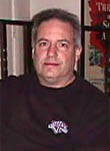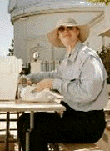|
|
This topic comprises 4 pages: 1 2 3 4
|
|
Author
|
Topic: Obsolete Dolby sound formats.
|
Stephen Furley
Film God

Posts: 3059
From: Coulsdon, Croydon, England
Registered: May 2002
|
 posted 07-01-2007 08:13 AM
posted 07-01-2007 08:13 AM




How widely used were the following sound formats:
Dolby mono.
Dolby stereo, no surround.
Dolby 'A' four track magnetic.
Can anybody give examples of films which were released in these formats?
On the Dolby 'A' magnetic tracks, was the dreaded 12kHz. surround switching tone system still used, or was abandoned, due to the noise reduction on the surround channel? Or indeed, had it already been abandoned in any case by the time the Dolby magnetic prints were introduced? What, and when, was the last film to be released with the 12kHz. switching system?
When Dolby SR was introduced did it immediately replace Dolby 'A' on film prints, or was there a considerable period of overlap when both systems were in use?
There have been four channel Super-8 magnetic releases, with Lt on the main, and Rt on the balance stripe; have any of these used Dolby B, or indeed any other form of noise reduction?
I have run a couple of matrix encoded Dolby 'A' tracks on 16mm fullcoat magnetic, but these were the filmakers own prints for his own use; was there any other use of any noise reduction on any 16mm prints, e.g. for television use?
| IP: Logged
|
|
|
|
|
|
|
|
|
|
|
|
|
|
|
|
Michael Coate
Phenomenal Film Handler

Posts: 1904
From: Los Angeles, California
Registered: Feb 2001
|
 posted 07-01-2007 01:43 PM
posted 07-01-2007 01:43 PM




quote: Stephen Furley
Dolby 'A' four track magnetic.
Can anybody give examples of films which were released in these formats?
THE LITTLE PRINCE (1974, Paramount)
NASHVILLE (1975, Paramount)
LED ZEPPELIN: THE SONG REMAINS THE SAME (1976, WB)
A STAR IS BORN (1976, WB)
MacARTHUR (1977, Universal)
ALL THAT JAZZ (1979, Fox)
HAIR (1979, UA)
FAME (1980, MGM)
THE IDOLMAKER (1980, UA)
TAPS (1981, Fox)
FANTASIA (1982 re-issue, Disney)
YENTL (1983, MGM/UA)
AGAINST ALL ODDS (1984, Columbia)
THE NATURAL (1984, TriStar)
BRING ON THE NIGHT (1985, Goldwyn)
| IP: Logged
|
|
Stephen Furley
Film God

Posts: 3059
From: Coulsdon, Croydon, England
Registered: May 2002
|
 posted 07-01-2007 03:00 PM
posted 07-01-2007 03:00 PM




quote: Steve Guttag
As for offical Dolby Mono films...A Clockwork Orange I think was on the Dolby mono list.
That was recorded with Dolby, and is often claimed to be the first film to use the process (I don't know whether it actually was), but wasn't the track on the release prints standard Academy mono?
quote: Steve Guttag
I am not aware of any 35mm 4-track films with Dolby-SR but there is no technical reason that they could not exist.
No technical reason, but I think it would be umlikely, at least in Europe and the US, 4-track had been pretty much dead for some time when SR was introduced. I believe it lasted somewhat longer in India.
quote: Michael Coate
THE LITTLE PRINCE (1974, Paramount)
NASHVILLE (1975, Paramount)
LED ZEPPELIN: THE SONG REMAINS THE SAME (1976, WB)
A STAR IS BORN (1976, WB)
MacARTHUR (1977, Universal)
ALL THAT JAZZ (1979, Fox)
HAIR (1979, UA)
FAME (1980, MGM)
THE IDOLMAKER (1980, UA)
TAPS (1981, Fox)
FANTASIA (1982 re-issue, Disney)
YENTL (1983, MGM/UA)
AGAINST ALL ODDS (1984, Columbia)
THE NATURAL (1984, TriStar)
BRING ON THE NIGHT (1985, Goldwyn)
That's a longer list than I was expecting.
quote: Mitchell Dvoskin
The original release of Apocolypse Now 35mm had surround during the helicopter attack on the village. There was one other scene that had surround, which escapes me at the moment. The rest of the film was front only.
That's interesting, given that it was the 70mm version of this film that the Dolby SA5 unit was introduced for. Did the 70mm version also use the surrounds in only a few scenes?
Were there instructions to turn off the surrounds during the rest of the film in the 35mm matrix version, to prevent leakage from the L and R channels?
My interest in stereo sound is somewhat strange given that I have a hearing defect which causes me difficulty in correctly hearing direction in sound. This has got considerably worse in the last couple of years, so it is now probably too late for me to properly hear the track that I would be most interested in, even if it does get presented somewhere; the 4-track 35mm (and 34mm) version of 'Around the World in 80 Days', with the Perspecta surround track. I would also like to have heard Fantasound before the original recordings were put through so much processing and conversion over the years.
| IP: Logged
|
|
Frank Angel
Film God

Posts: 5305
From: Brooklyn NY USA
Registered: Dec 1999
|
 posted 07-01-2007 03:48 PM
posted 07-01-2007 03:48 PM





quote: Steve Guttag
I agree with a friend of mine that stated that they got it wrong...the tone should have been present when the track was otherwise silent. If you don't have the equipment to decode the track, you turn it off or make a simple low pass filter. If you do have the equipment you have silence with there is nothing on the track and have clean audio when it is on.
Unfortunately there was lots of things wrong with that whole 12khz trigger tone concept -- totally assinine idea. Using it to turn OFF the surround channel wouldn't work either, in fact it would be worse.
First, the problem that the trigger tone was trying to solve was not only that the surround channel was noisy and needed to be silenced when not in use, but that the adjacent channels leaked audio content into it; even the best heads of those days were susceptible to cross-talk, and as we know, there is nothing worse than hearing dialogue coming out of the surround channel preceding the same dialogue from the front, the delay being made even worse by the mammoth size of the theatres in those days. And in 1953, digital delaying the surround channel al la Dolby's surround, which would have fixed it (somewhat), was much to expensive. In fact, if it weren't for the cost of digital delay coming more affordable because of large scale integrated circuits, Dolby's matrix surround wouldn't have been possible either.
As for the cross-talk -- well, it didn't only bleed from the front channels to the surround -- it worked the other way as well. And remember, that 12kHz was recorded at freakin ZERO DB! It easily bled into the adjacent front channels when it was present. At least if it is ON only when the surround needed to be activated, it usually was when music content at good levels was present in the screen channels, which somewhat masked the leaky 12kHz tone. Even with the best notch filters -- we use the top-of-the-line Altec 12k tunable notch filters -- you still hear that eeeeeeee tone. There wasn't a 4trk mag film that I ever saw, and I've seen alot, no matter in what theatre, where I didn't hear that blasted tone which allowed me to turn to my friends and say, "Watch, the surround channel is going to come on now." (obnoxious little unpopular smartass that I was).
If that tone were pumped into the surround track ALL THE TIME except for then the surround track was active, it would drive everyone craze and require notch filters in the front channels as well and it STILL wouldn't eliminate it totally. Can you imagine in quiet sections of the film, hearing that squeal coming from the screen channels? How they settled on that system is beyond me. They could have at least figure a way to record the trigger at lower levels.
Or they could have easily done it with a cheap threshold/ducking amp. They were readily available as audio gear and used routinely in radio stations at the time. The presense of an audio at a certain threshold level would allow the audio signal to pass; anything lower than that, and the ducker would drop the output completely. We did just that -- got rid of the stupid relay and put in a Fairchild ducking unit which dropped the audio to the surround amp to -40db when there was no audio present. What was really sweet about using this system was that you could adjust the decay time so that the surround channel didn't just go instantly dead like it would with the relay; you could set the ducker to fade at something like a 2 second delay when there was no audio present, making it not nearly as noticable as an abrupt disconnect. Likewise the attack could be set so it was not an instant ON, but a smooth fade up. We set that much faster, but still not an instant ON. The trigger tone on the prints always preceded audio by a good couple of seconds so even though we faded up at say .5 seconds, it never missed actual audio.
This system even works well for the prints that have no trigger tone, of which there are quite a few.
| IP: Logged
|
|
|
|
|
|
|
|
|
|
|
|
All times are Central (GMT -6:00)
|
This topic comprises 4 pages: 1 2 3 4
|
Powered by Infopop Corporation
UBB.classicTM
6.3.1.2
The Film-Tech Forums are designed for various members related to the cinema industry to express their opinions, viewpoints and testimonials on various products, services and events based upon speculation, personal knowledge and factual information through use, therefore all views represented here allow no liability upon the publishers of this web site and the owners of said views assume no liability for any ill will resulting from these postings. The posts made here are for educational as well as entertainment purposes and as such anyone viewing this portion of the website must accept these views as statements of the author of that opinion
and agrees to release the authors from any and all liability.
|

 Home
Home
 Products
Products
 Store
Store
 Forum
Forum
 Warehouse
Warehouse
 Contact Us
Contact Us




 Printer-friendly view of this topic
Printer-friendly view of this topic



















